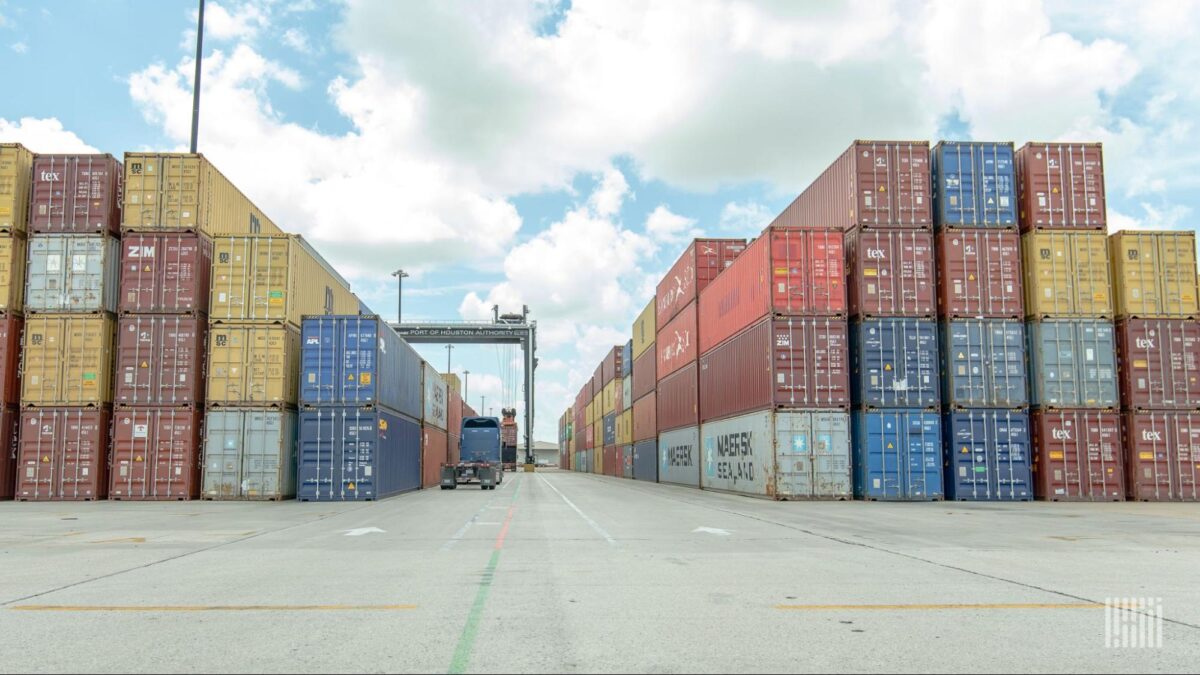Hot Take

National Take Your Dog to Work Day is a favorite for many office workers. Lassie gets to come with you and have a pup-tastic day at the office. Those in pet-friendly offices get to experience this joy on a daily basis, but what about truck drivers? Turns out about 40% of truck drivers bring their pets along on the road. Driving for hours on end without a partner in the cab is extraordinarily lonely.
The human/animal bond has been proven to be beneficial to those with PTSD, depression, anxiety, etc., and studies have shown that animals can reduce cortisol (stress and anxiety) and increase oxytocin and happiness in humans.
The younger generations are driving the world to be more pet friendly. Dogs are found in hospitals, businesses, hotels, bars, etc. People are pushing for their animals to have a higher quality of life as humans do. The pet-related economy is the fastest-growing investment area, surging from $115 billion in 2021 to an expected $300 billion in seven years — a rate of growth that is unmatched in any other sector.
When it comes to animals on the road, it does take some planning on the drivers’ part. Animals do require breaks for exercise and when nature calls, and it turns out most humans can benefit from these breaks as well. Not all trucking companies allow drivers to have animals in the cab and not all shippers/receivers allow animals in their facilities, but those that do should be made known to drivers when booking loads.
A simple note on the BOL or rate confirmation saying yes or no animals allowed means that you can get the right driver on the right load and keep everyone happy. No one wants to deal with a driver calling while trying to check into a guard shack saying he or she can’t get unloaded because this facility doesn’t allow animals.
If we have learned anything this last year, it’s that drivers make the world go round and we need to be cognizant of their needs. If that means they want to bring their dogs, cats, birds, reptiles, whatever it is with them, then we need to be open and flexible to their needs.
Quick Hits

We got 99 problems and container ships are all of them. 2021 taught us that people who don’t know anything about supply chains and transportation are now experts and the reason we ran out of toilet paper, again, is because of the ships waiting off the port. I can’t tell you how many times I heard: “My online order hasn’t gotten here yet because of those ships.” I’m 100% confident that isn’t the case, but who am I to explain the entire supply chain disruption in a bar?
People might not be as interested as to why they can’t get the things they ordered now that the holidays are over, but the port congestion issues are far from over. We are at 105 ships waiting to berth off Los Angeles and Long Beach, or 815,958 twenty-foot equivalent units. As shipping companies are looking for other options, the ports on the rest of the West Coast have started seeing increased volumes, as have the ports on the East Coast.
The Port of New York and New Jersey has the largest queue on the East Coast with 11 ships, which is amateur hour compared to the West but still something to be carefully monitored. As we divert imports to other ports, there is a chance that we overwhelm all the ports and we’re just in a complete gridlock. I think we’re far from that, but it’s not an impossible future. As we head into the rest of Q1, keep an eye on the ports around the country to ensure the volumes don’t get out of control and you can match your rates accordingly.

We might have a break in as many ships heading to the West Coast ports as there are COVID cases bringing parts of China to a screeching halt ahead of the Lunar New Year. China has a zero-tolerance policy toward COVID, meaning that the entire region is on lockdown. The city around the Port of Tianjin has tested all 14 million residents for COVID and in certain areas people are not allowed to leave their homes, while other zones permit one person to leave to buy groceries every other day.
As a result of these lockdowns, truck deliveries from Tianjin are restricted and sometimes being rejected at the receiver. The airport has suspended pickup operations for all import containers. The Port of Tianjin is operating with reduced hours and truck drivers are required to register for access after clearing a health test.
The Port of Ningbo has followed a similar path, requiring drivers to present two negative COVID tests. The port is considered partially closed as there were a few positive cases of COVID, causing China’s zero-tolerance policy to once again go into effect. As the port workers and drivers are both under these restrictions, it has drastically slowed down the volume of goods going in and out of the facility.
This partial shutdown of some of the major Chinese ports could help with our congestion, but ultimately it’s not good for the overall supply chain. Until China reverses this zero-tolerance policy, we can expect to see delays of goods being loaded onto container ships on top of the delays those ships will face once they get to U.S. ports. Start having those delay conversations with customers and advise them to think about padding a little bit more of their stock while these partial closures are in effect.
Market Check

Remember when January was quiet at the beginning of the month and then slowly ramped up as we headed into February? We saw the increase in rejections during the holidays and then a drop-off as we headed into January. Not anymore. In a surprise to almost no one, the volumes have not slowed down as we head into the new year. Shippers aren’t taking a break, so that means no one is.
That being said, contracted rates have increased approximately 17% over last year, meaning each rejection is happening at a higher price point, making this elevated level a little concerning as it may not be as much about the money as we thought. It’s that or the offers carriers are getting instead of this one are hard to pass up.
Who’s with Who

Intermodal provider RoadOne has acquired dedicated fleet EHS Trucking. EHS serves mainly the automotive sector throughout the upper Midwest with a fleet of more than 200 trucks and 1,000 trailers. The acquisition of a large trailer fleet will help expand RoadOne’s dedicated solutions capabilities. EHS Trucking has rebranded to EHS LogisticSolutions. This acquisition is RoadOne’s ninth acquisition in five years.
2021 was good for project44. After a record-breaking Q4, it has raised $240 million in equity funding led by TPG and the asset management arm of Goldman Sachs Group, making project44 valued at $2.4 billion. The goal for this investment is to expand project44’s network through strategic acquisitions, investing in product and engineering.










